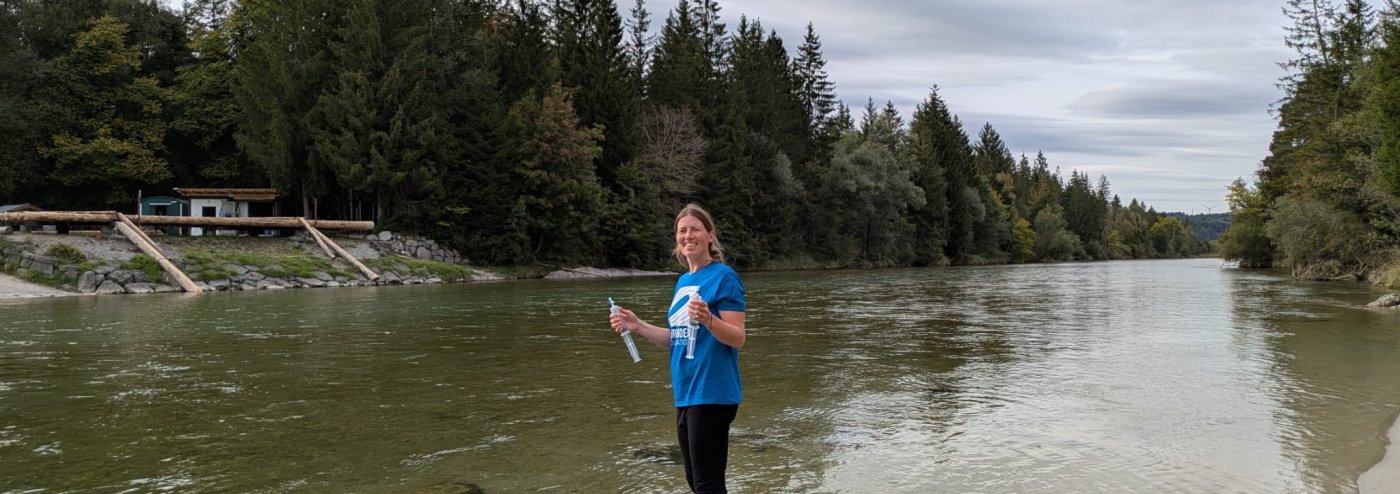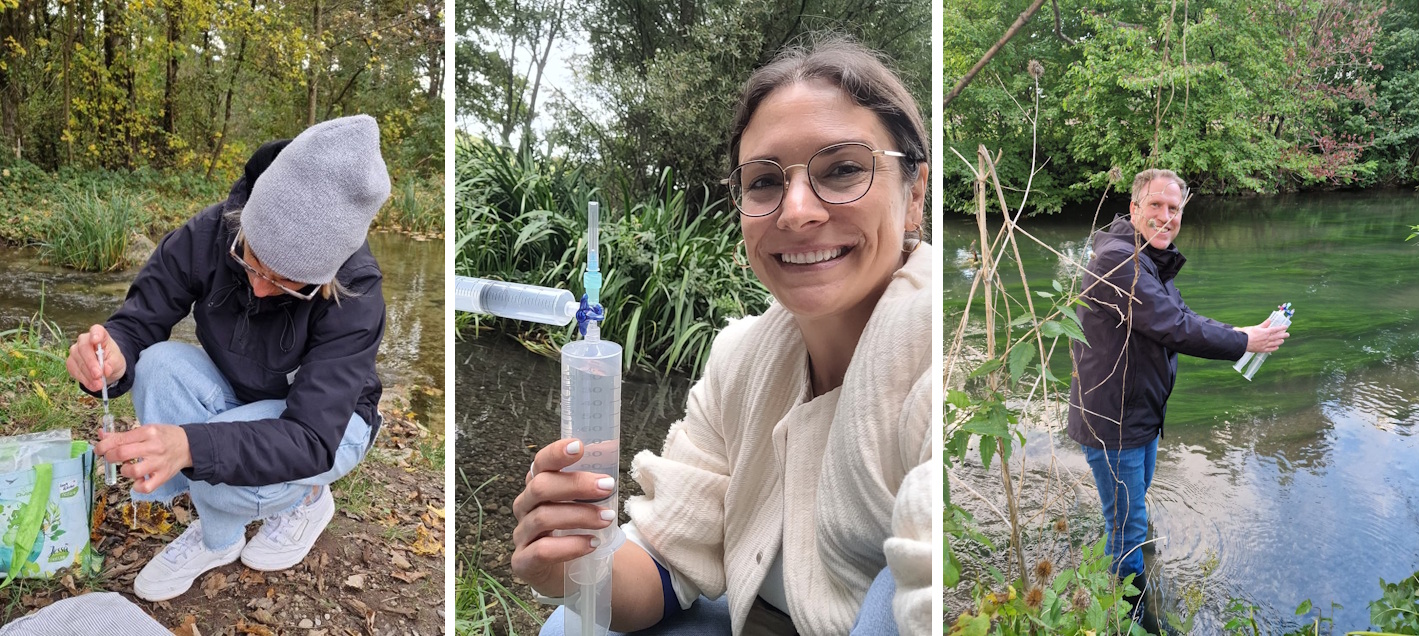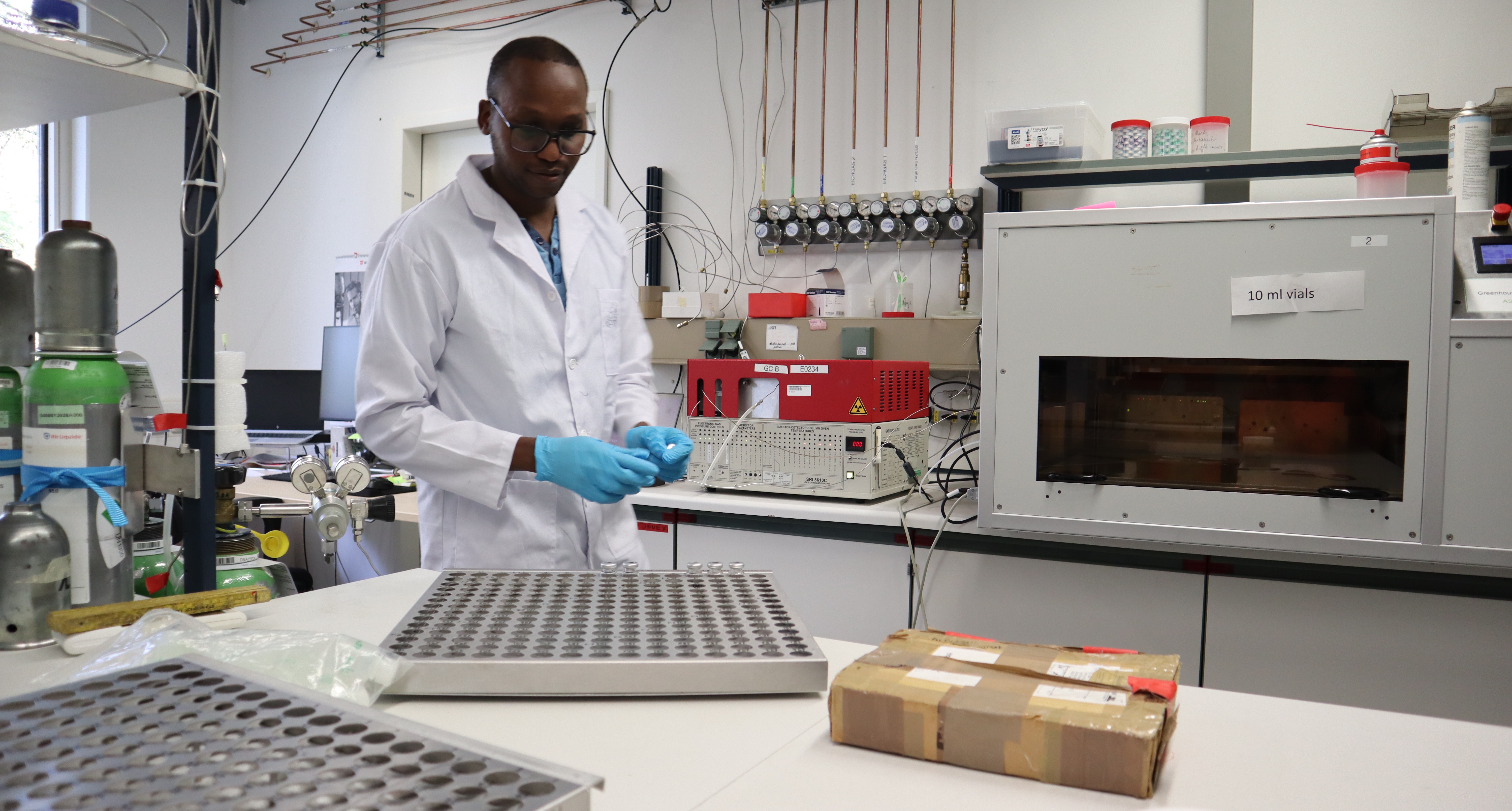
Launch of the Citizen Science Pilot Project by Surfrider Foundation Europe Germany e.V., and KIT Alpine Campus for Regular Greenhouse Gas Measurements in Water Bodies
Greenhouse gas emissions from water bodies remain under-researched. To address this gap, researchers at the KIT Alpine Campus in Garmisch-Partenkirchen have developed a method that enables citizens to contribute to closing this knowledge deficit. The Surfrider Foundation Munich, in collaboration with scientists, has devised a concept to test this method in the Munich region, bringing their extensive experience in environmental and water protection to the project. The data collected in the future could help to calculate greenhouse gas emissions from German water bodies with greater precision. This pilot project demonstrates how science and civil engagement can unite to advance our understanding of climate protection.
Emissions of greenhouse gases from water bodies can make a significant contribution to national greenhouse gas budgets. However, in contrast to other major emitting sectors, our understanding of emissions from carbon dioxide (CO2), methane (CH4), and nitrous oxide (N2O) is limited. Current estimates are based on a small number of individual measurements and are therefore subject to considerable uncertainty. The establishment of operational greenhouse gas monitoring systems with high spatial and temporal resolution - currently under development in Germany (see www.itms-germany.de) - requires precise information.

Colleagues of Surfrider Munich (from left to right:) in wintry October, Melanie starts to feel the chill while sampling the Amper. Lisa prepares a nearly finished gas sample for transfer to the sample jar. Kai keeps his feet dry while sampling at the Isar-Schleißheim Canal. All pictures: Copyright: Surfrider Foundation Germany Europe e.V.
While large European infrastructure projects have been established for measuring atmospheric greenhouse gases - using, for example, tall towers (100–344 m) to monitor regional emissions, and smaller towers for more localised landscapes (such as ICOS or TERENO) - emissions arising from water bodies can so far only be measured locally. At the KIT Campus Alpine in Garmisch-Partenkirchen, scientists in Dr. Ralf Kiese’s Division 'Terrestrial Bio-Geo-Chemistry' have developed a reliable method that enables citizen scientists to collect consistent data on greenhouse gas emissions from local streams, rivers, lakes, or ponds through regular sampling.
The Surfrider Foundation in Munich co-developed the pilot project concept and received training in sampling techniques from Dr. Hannes Imhof. By taking monthly gas samples from twelve rivers and lakes in the Munich area from September 2025 to spring 2026, members are supporting scientists in their investigations. The regularly submitted gas samples are analysed at KIT by Dr. Ricky Mwanake, and these unique data further enhance the database on greenhouse gas emissions from German water bodies. This test phase aims to determine whether it is feasible to conduct monthly measurements nationwide with citizen scientists. In the future, such data could feed into models that incorporate satellite data, allowing for the calculation of greenhouse gas emissions from rivers, streams, lakes, and ponds across Germany with unprecedented accuracy (Mwanake, 2025).
For over 30 years, Surfrider Foundation Europe Germany e.V. has been dedicated to protecting oceans and water bodies. This citizen science project empowers individuals to contribute to the monitoring of greenhouse gas emissions through their own measurements. For KIT and Surfrider Foundation Munich, the pilot project marks a decisive step forward in linking science with civic engagement, enhancing our understanding of the contribution water bodies make to climate protection, and highlighting water protection as an integral part of climate action.

Dr. Ricky Mwanake (KIT Alpine Campus) analyses multiple gas samples using gas chromatography in the Landscape Biogeochemistry Department laboratories. (Copyright: Ricky Mwanake, KIT)
This approach helps to close data gaps and enables more accurate detection of emissions from water bodies. Science gains impact when it connects people: the volunteer network fosters responsibility and makes climate protection tangible. It strengthens awareness of the role our water bodies play in the climate system—and demonstrates that their protection also benefits the oceans. Rivers, lakes, and streams are not only vital habitats but are also directly affected by climate change. Through this project, people are encouraged to get involved and participate independently in research. The citizen science initiative embodies the core mission of the Surfrider Foundation worldwide: protecting water bodies from source to sea. After all, all water is connected. Those who protect our rivers ultimately protect the oceans as well.
Reference: Mwanake, R.M., Wangari, E.G., Winkler, K., Gettel, G.M., Butterbach-Bahl, K., Kiese, R. (2025). From data to insights: Upscaling riverine GHG fluxes in Germany with machine learning. Science of the Total Environment 958: 177984. https://doi.org/https://doi.org/10.1016/j.scitotenv.2024.177984
Header picture: Michaela from Surfrider Munich collects samples from the Isar, which is still warm enough in autumnal September to take samples directly from the river.